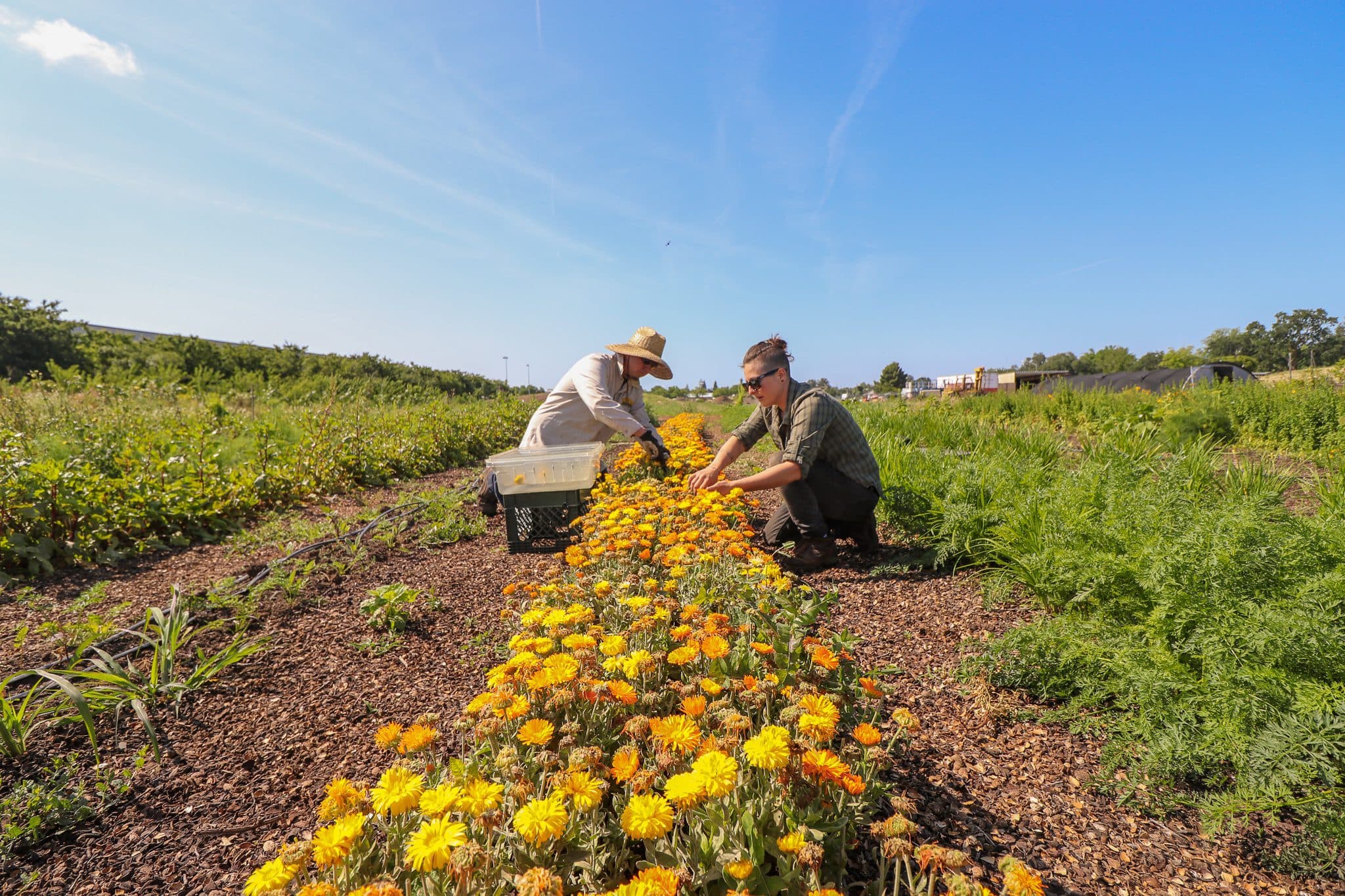Jim Belles surveys the brewery garden, walking a groomed pathway. The sun is still groggy, rising slowly. Jim pivots left, takes a few steps into a row and crouches down.
He pops up and holds out a gift.
“Give this a try,” he says.
It’s an alpine strawberry. A tiny thing—the size of a fingernail—with a curious off-white color. By looks alone, it doesn’t seem that promising. But why would Jim, our agriculture supervisor in Chico, hand us a disappointment?
It’s delicious. Juicy, a bit like pineapple.
Dan Grice, the executive chef of our Chico Taproom, also remembers being skeptical.
“Why would I eat this bitter little bud of a strawberry?” Dan asked himself. “I’m gonna wait for it to get big and red.”
But Jim’s teammate, Estate garden technician Ali McMorrow, urged chef Dan to give it a taste. Days later, Dan featured alpine strawberries in a Taproom menu special.
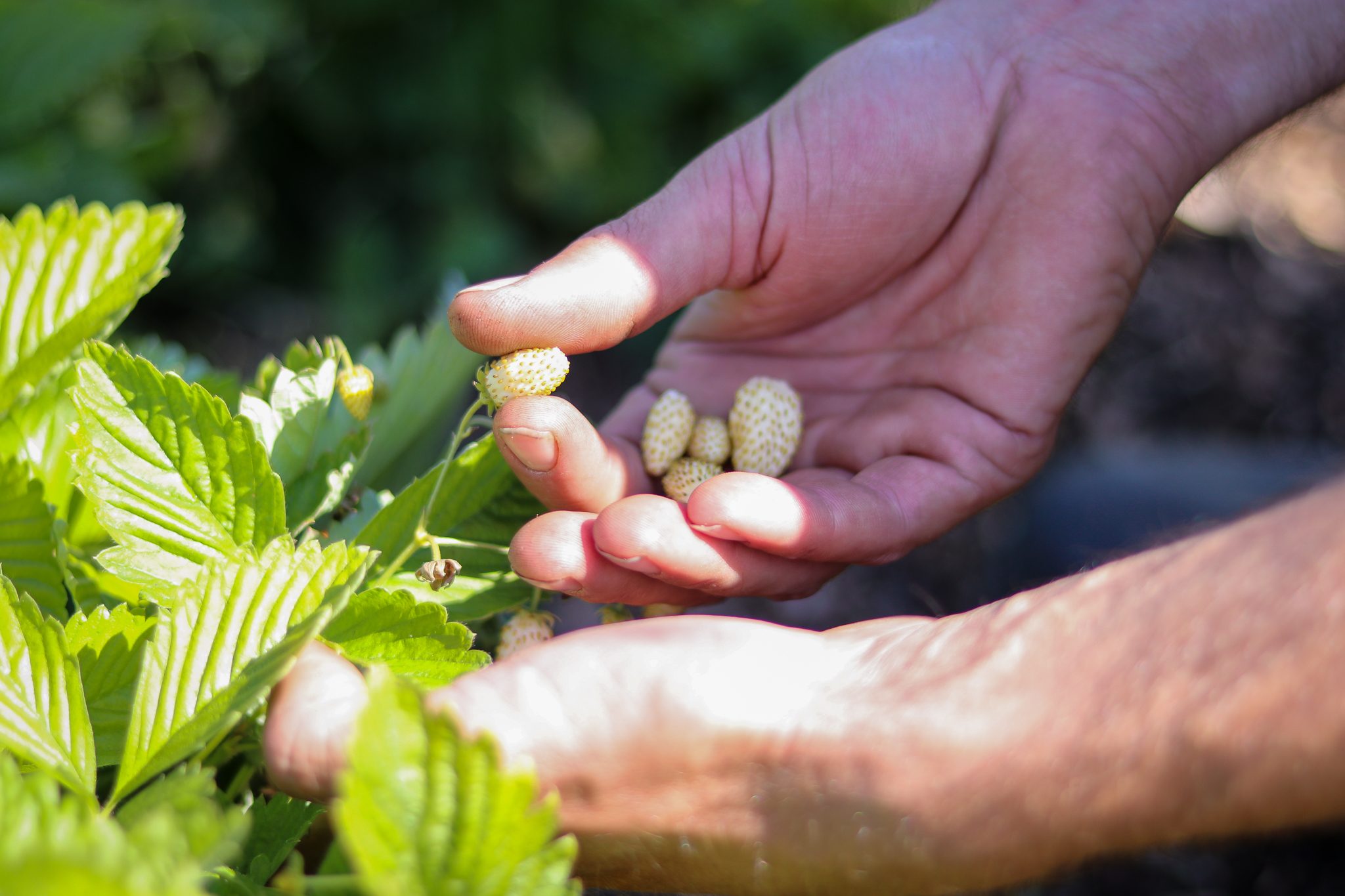
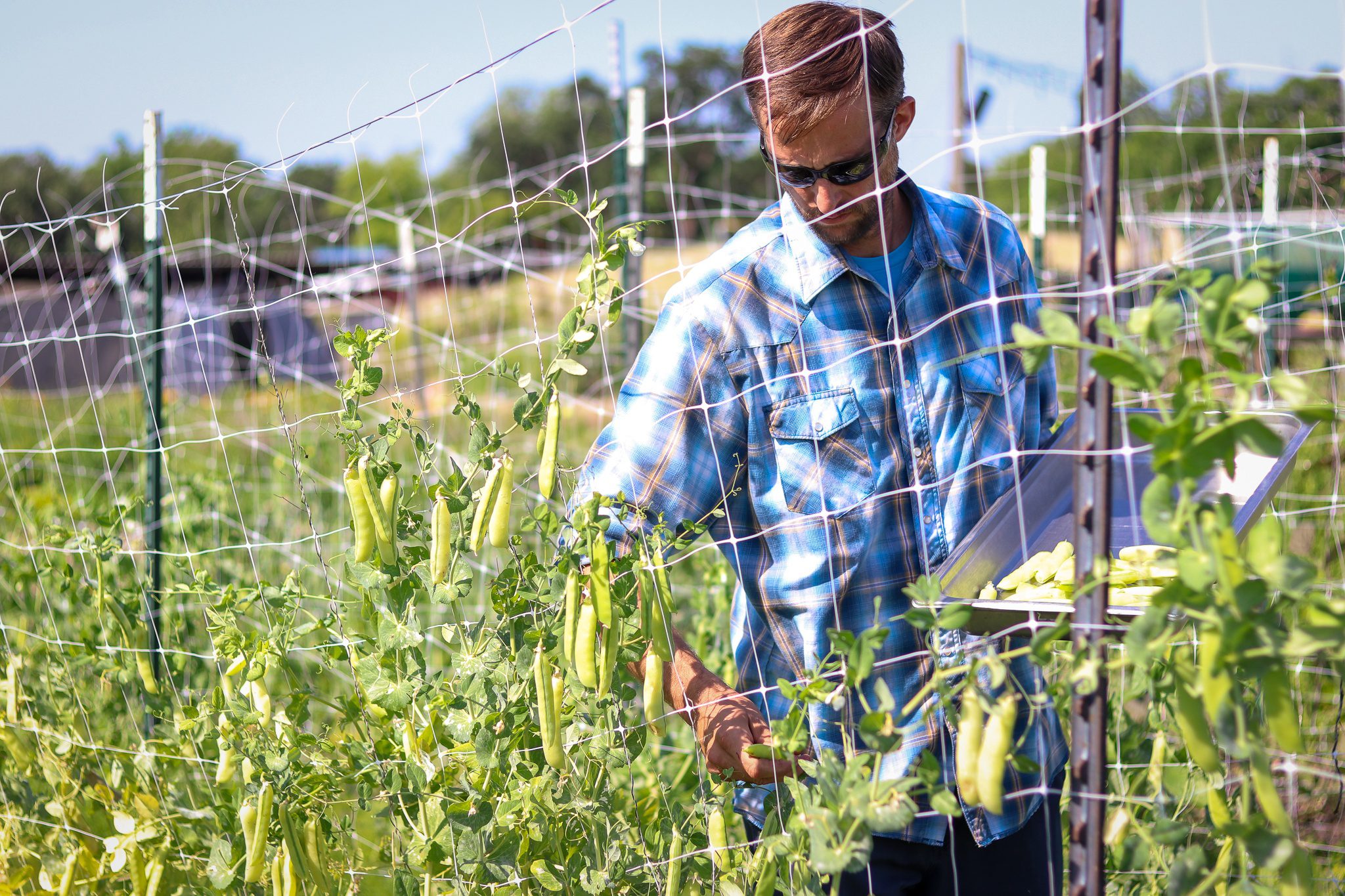
We started exploring Estate agriculture in 2005 with a few rows of hops. Today in Chico we maintain 10 acres of hops, 100 acres of barley and rotational crops, and two acres of garden. All of it is certified organic by Oregon Tilth.
When we opened our second brewery in 2015 in Mills River, North Carolina, garden space was drawn into the plans from the get-go. There we have two certified-organic plots: a roughly half-acre kitchen garden and another four acres down the hill near the French Broad River.
Jessie Massie, the executive chef of our Mills River Taproom, says the kitchen garden is “really right outside our back door,” allowing her teammates to grab morning harvests of herbs, garlic and other daily staples.
It all traces back to our founder Ken Grossman’s vision to brew and do business with a sustainable and economical bent. We want local food sources for our Taproom. Why not our backyard? We want to experiment with hops and barley. Hey, let’s grow some of our own.
But Estate agriculture is more than principles and convenience. It’s a launchpad for creativity and collaboration, a homegrown synergy that ends up on plates, in bottles or even on display for Oktoberfest ambiance.
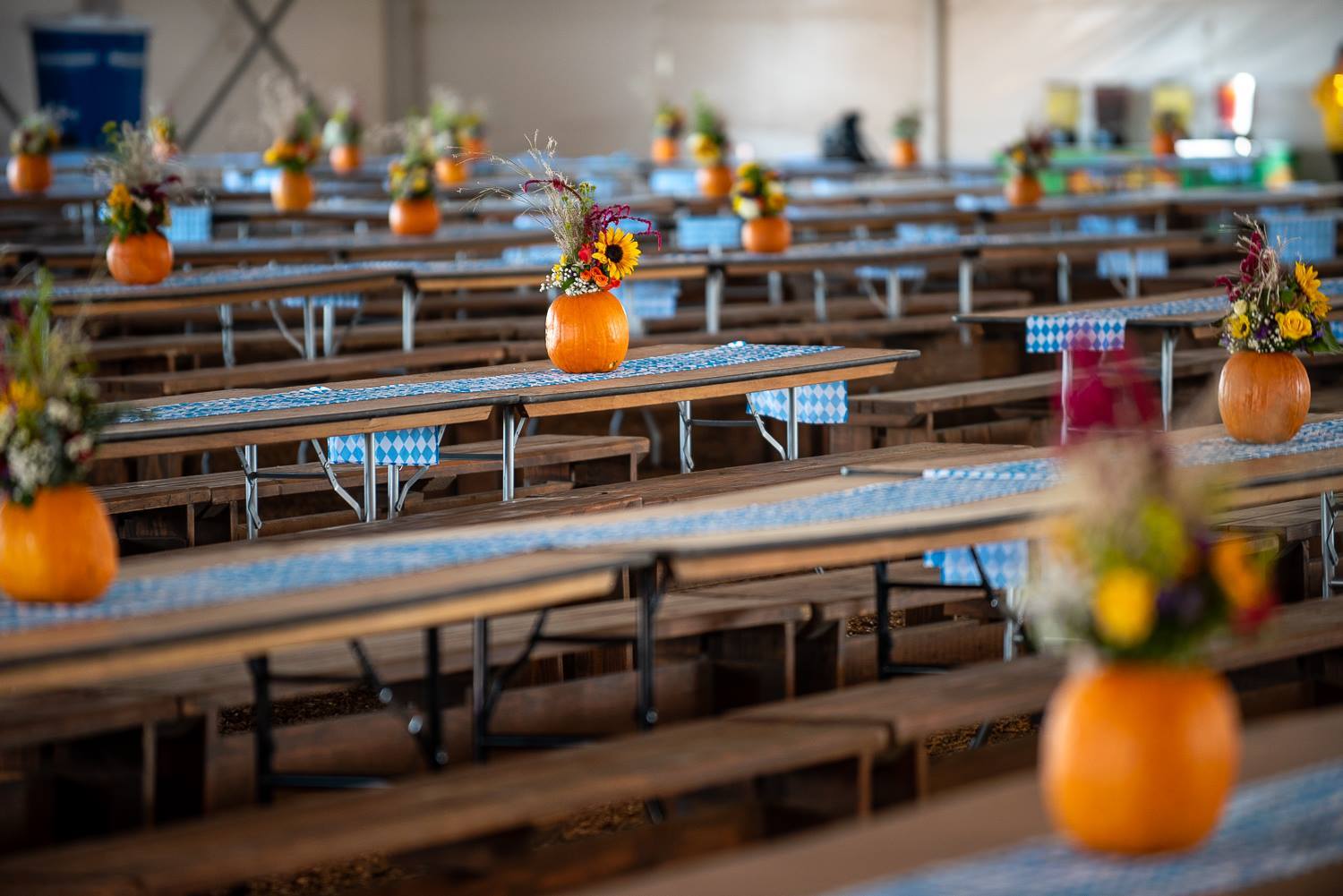
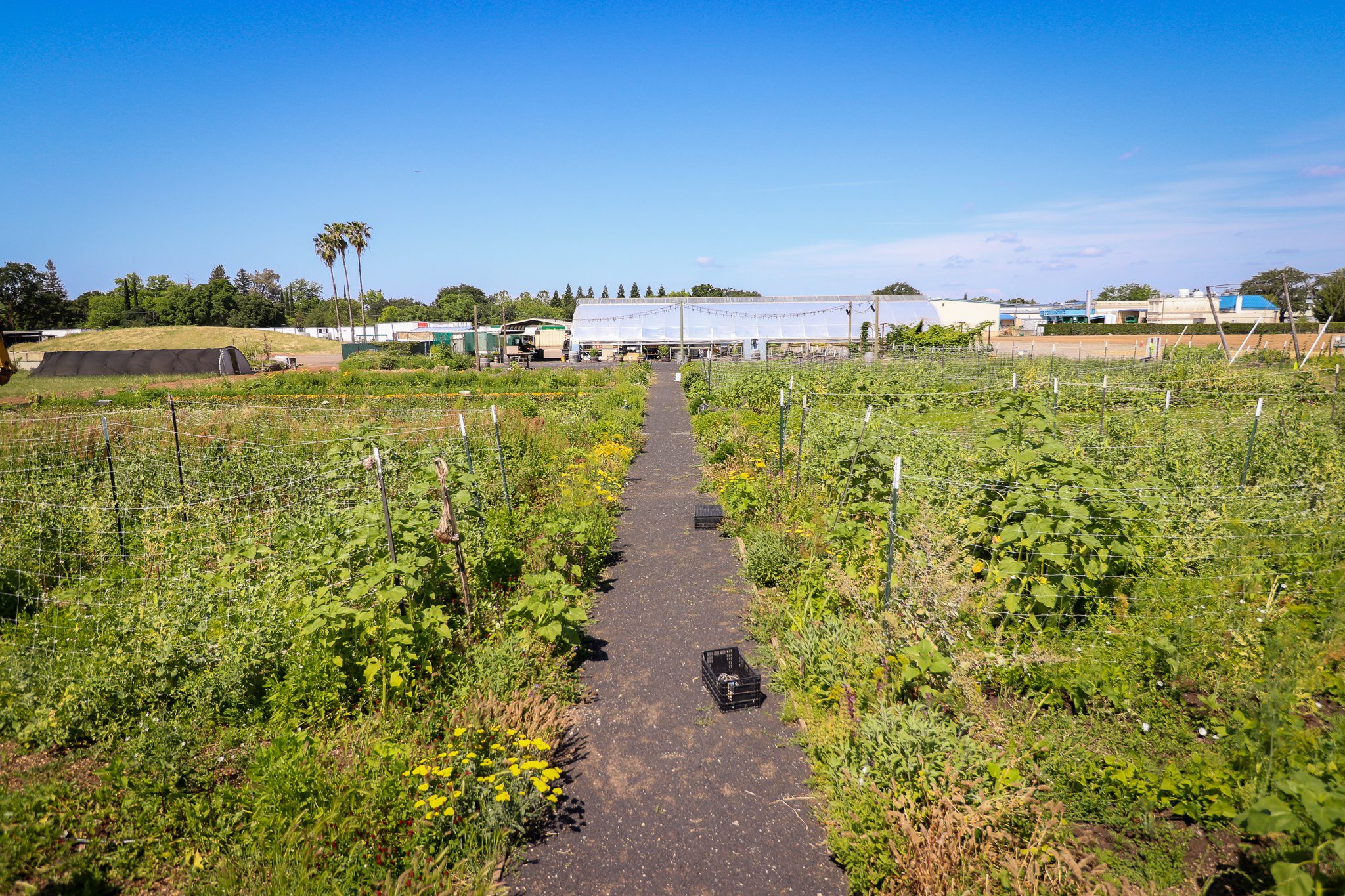
“We’re fortunate that the framework is here to practice our natural arts,” says Jim, Chico’s agriculture supervisor.
Whether it’s the sheer diversity and volume of what’s growing in the gardens or their thoughtful approach to farming, our agriculture teams on both coasts maximize their playgrounds.
In Chico, there are more than 170 varieties of plant life in the ground—vegetables, stone fruit trees, flowers and more—from items the Taproom always needs (e.g., green onions) to “that weird thing I heard of once upon a time,” Jim says.
Last year, 150 pounds of Estate peaches went toward a barrel-aged Saison we’ll soon release through Alpha Hop Society, our rare-beer club.
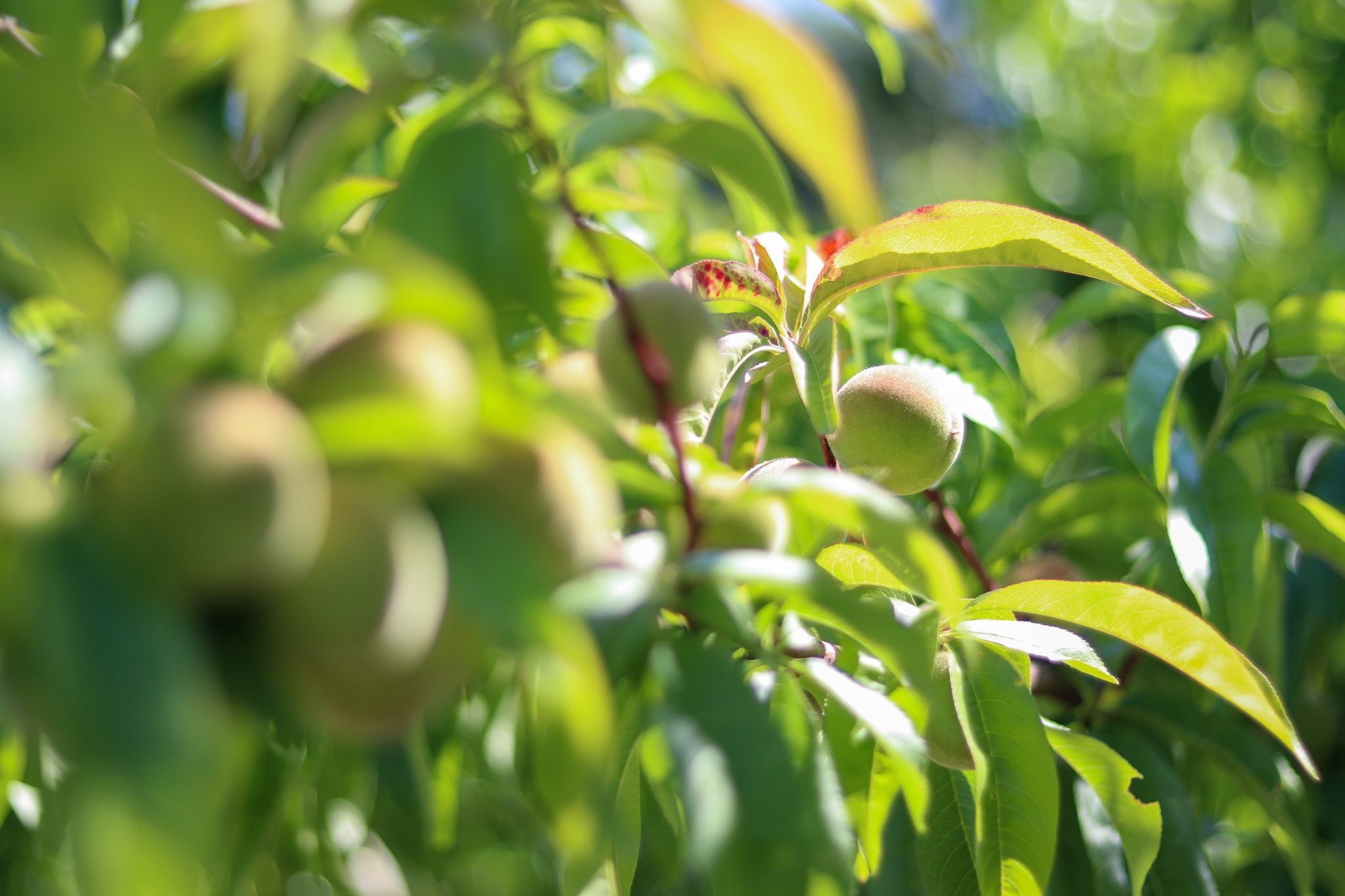
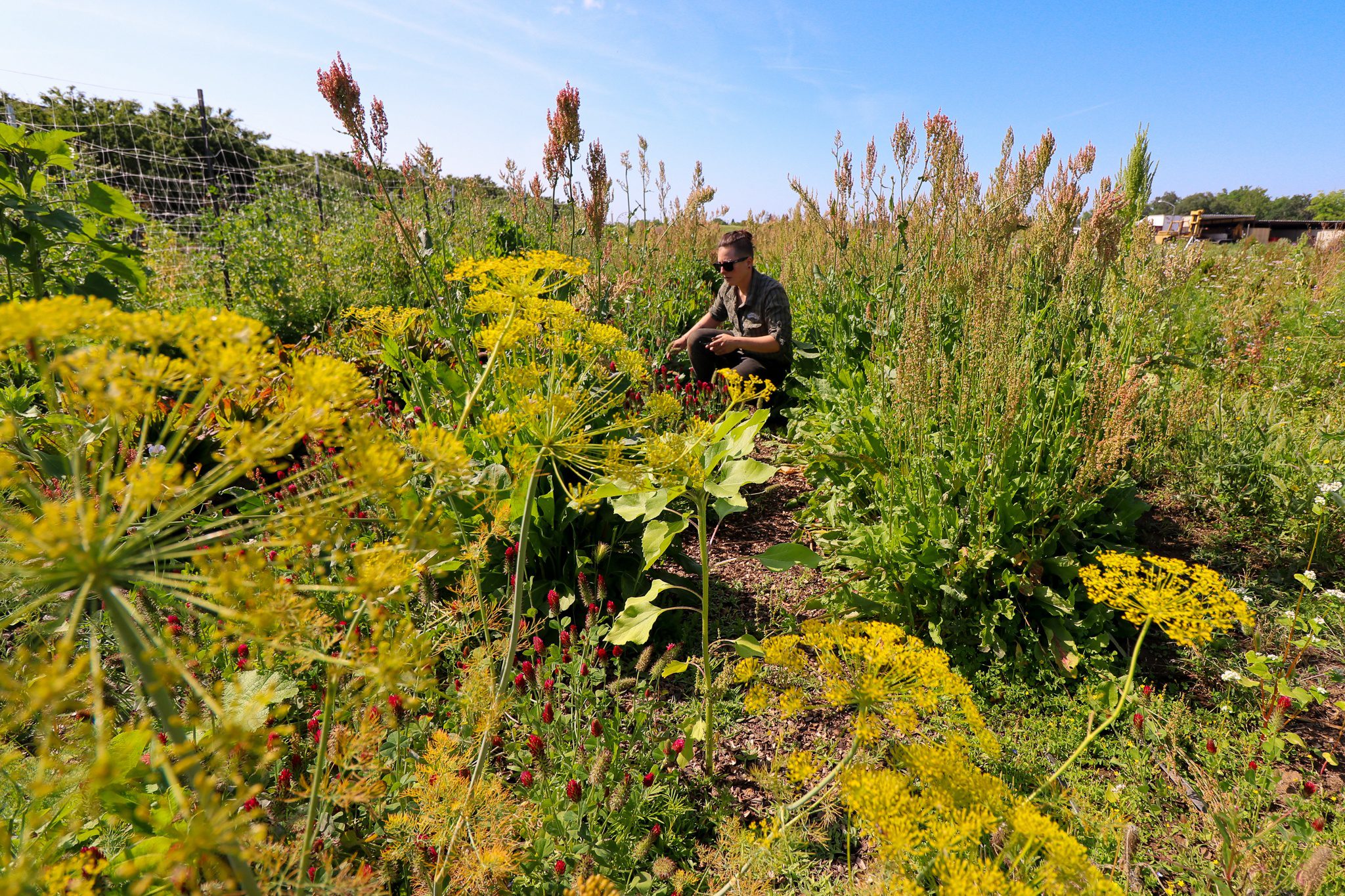
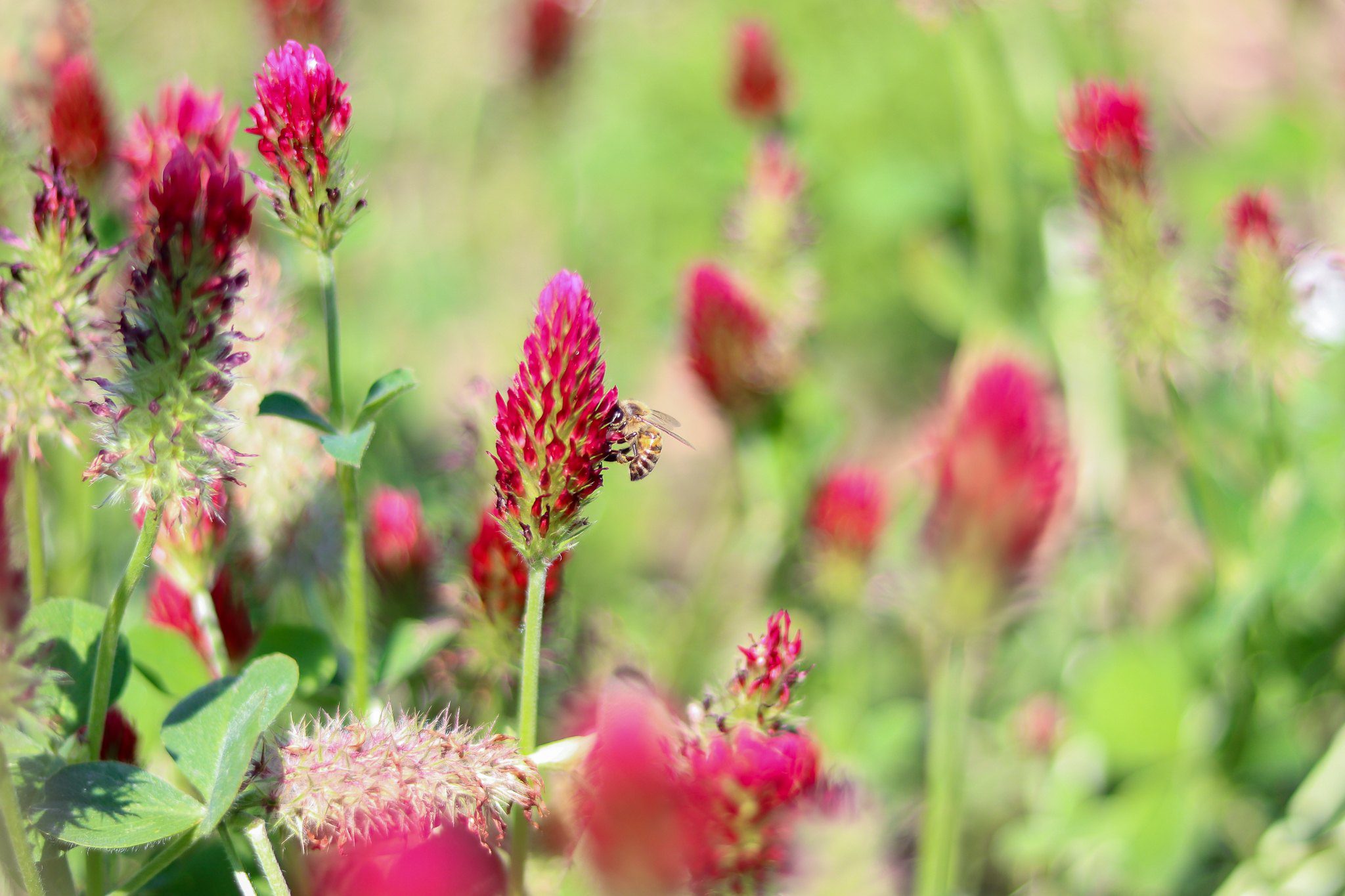
The variety is big in Mills River, too, from pumpkins and watermelons to lettuce and leeks. (Last year, they scored 4,000 pounds of butternut squash—and used all of it.)
“We’ve grown pretty much the range of things you can grow in this [climate] zone,” says chef Jessie.
And these garden bounties are fostered with real care. Jim highlights our commitment to regenerative agriculture, a system of practices focused on healthy soil, thriving ecosystems, and reducing climate impacts. Part of that regenerative mix is weaning ourselves from regular tilling of land.
When you till, you’re “hitting a reset button on the biology as far the soil is concerned,” Jim says. Key nutrients can escape (e.g., nitrogen) and it can wreck the balance of beneficial organisms. Instead we’re “learning to work with our soil and the complex life it contains.”
They also employ intercropping, which can help with pest management and enrich the ground. Conventional farming often favors monoculture—dense rows of the same thing—for an easier harvest. But intercropping means alternating items in a row. Jim points out squash growing between green onions.
“We produce more with the space we have,” he says. “while nurturing the soil in the process.”
And chef Dan in Chico is adamant that these decisions make a difference.
“I can taste it in the quality of the vegetables,” Dan says. “I haven’t had kohlrabi or fennel or beets that taste that good from a produce company.”
Chef Jessie in Mills River agrees.
“[More than] supporting community and sustainability,” she says, “you buy local and you grow your own stuff because that’s the best flavor you can get.”
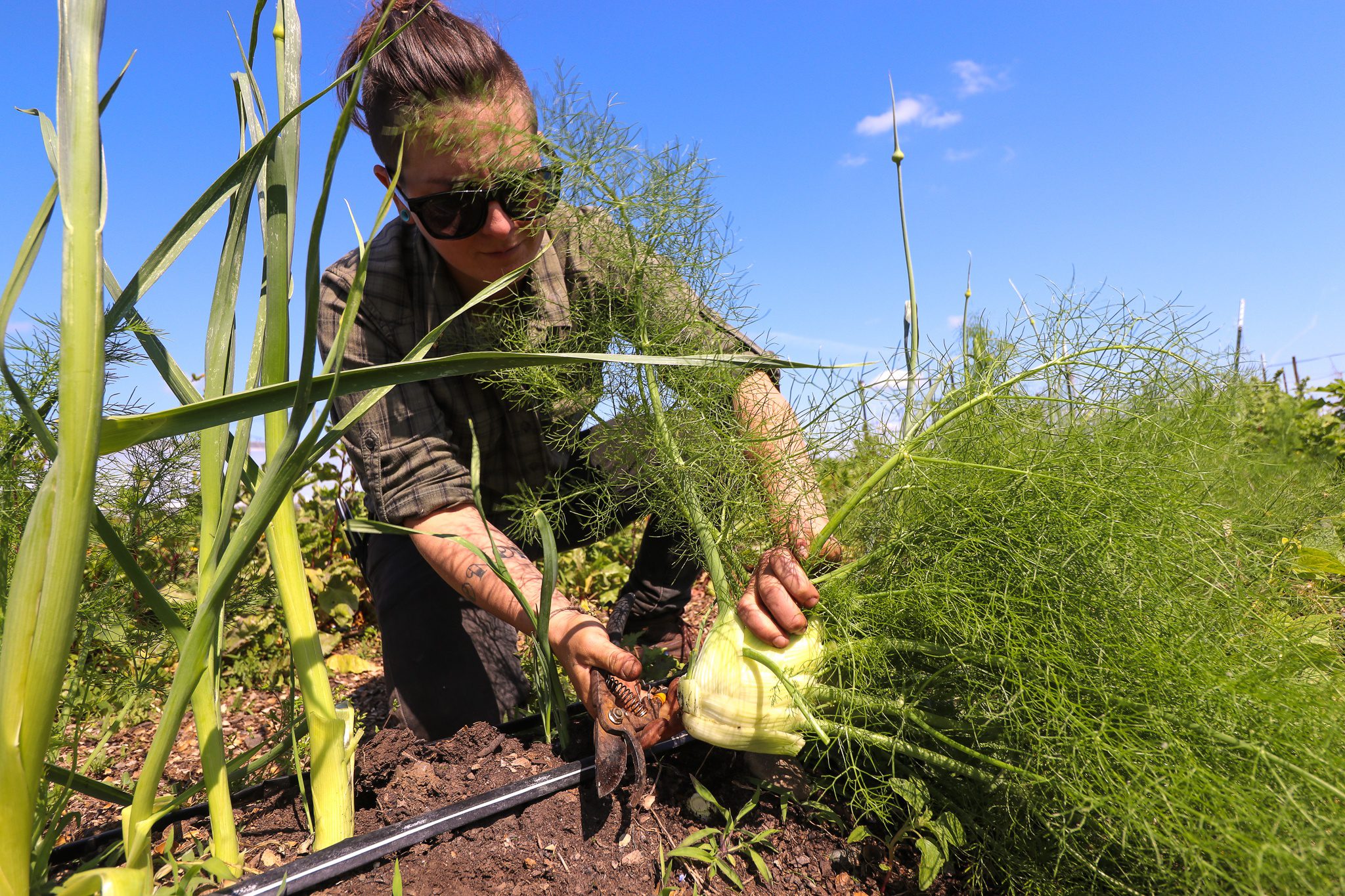
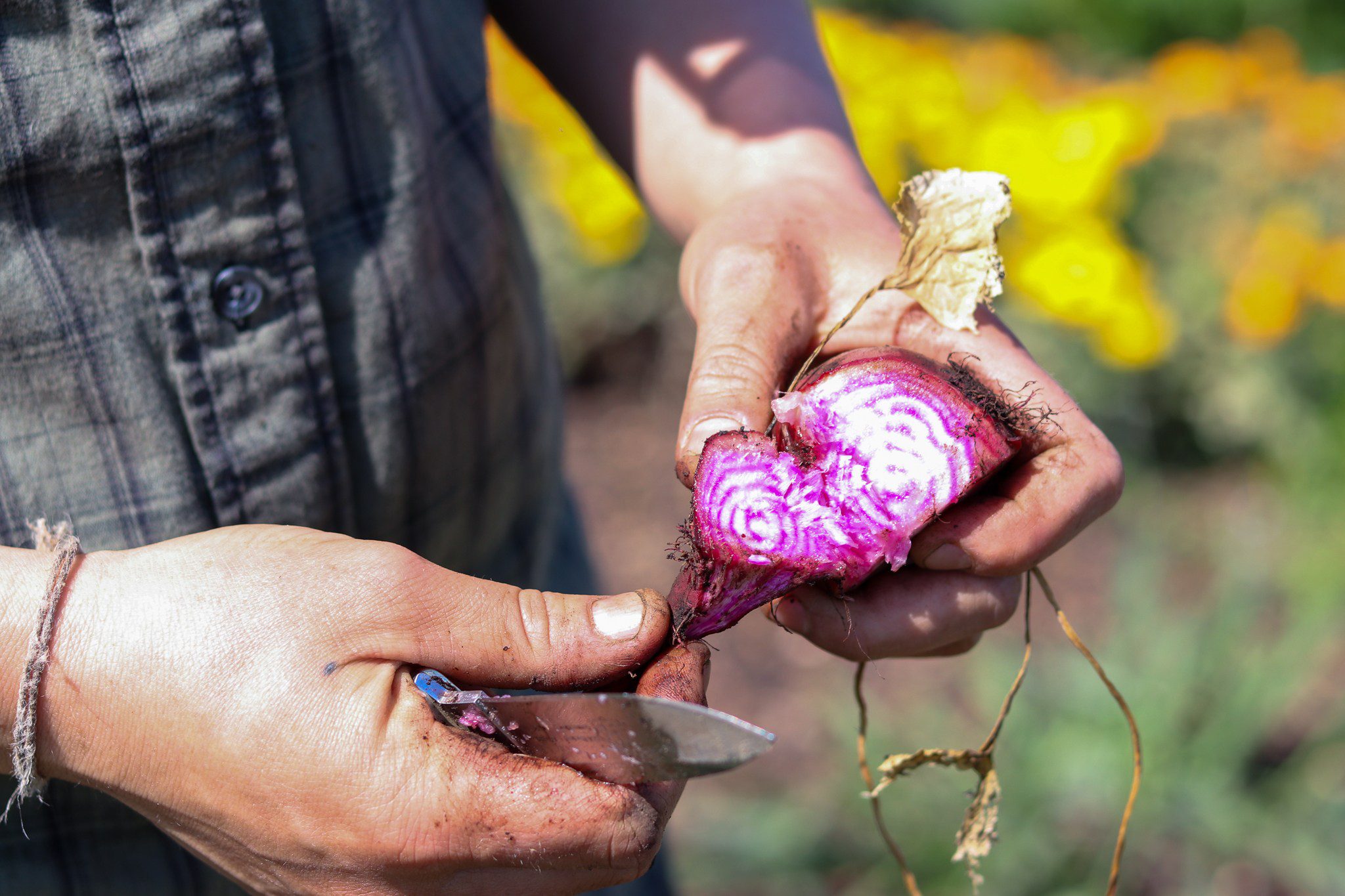
Dan’s been our executive chef in Chico for six months. (He started nine days before the Camp Fire; his onboarding was a hectic dive into it all.)
“When I first started, Jim gave me a stack of seed catalogs and was like, ‘Here’s your homework,’” Dan says. “‘Go home and tell me what you want to grow, and we’ll see if we can grow it.’”
After a few days, Dan shared his top choices. Can you grow these?
“Half the stuff they’re like, ‘We already do,’” Dan says.
Dan also has realistic expectations, he says. He grew up gardening, starting around 7 or 8 years old. As an adult, he’s made sure there’s a garden wherever he lives. Dan had ample garden space during a season in Santa Cruz, California.
“I grew everything,” he says. “I got into canning. I got into preserving, pickling. That made a huge difference. I really learned about flavor.”
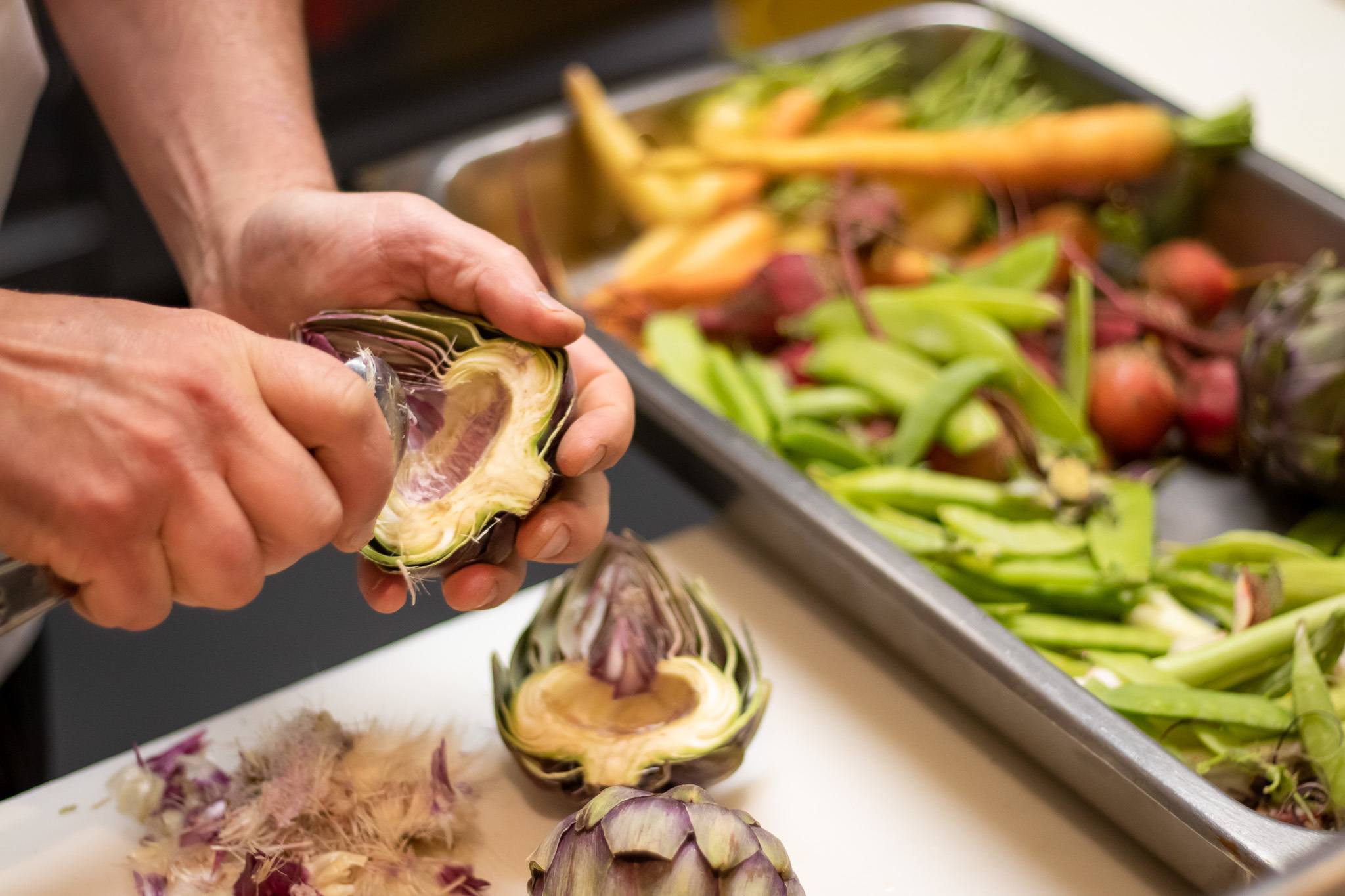
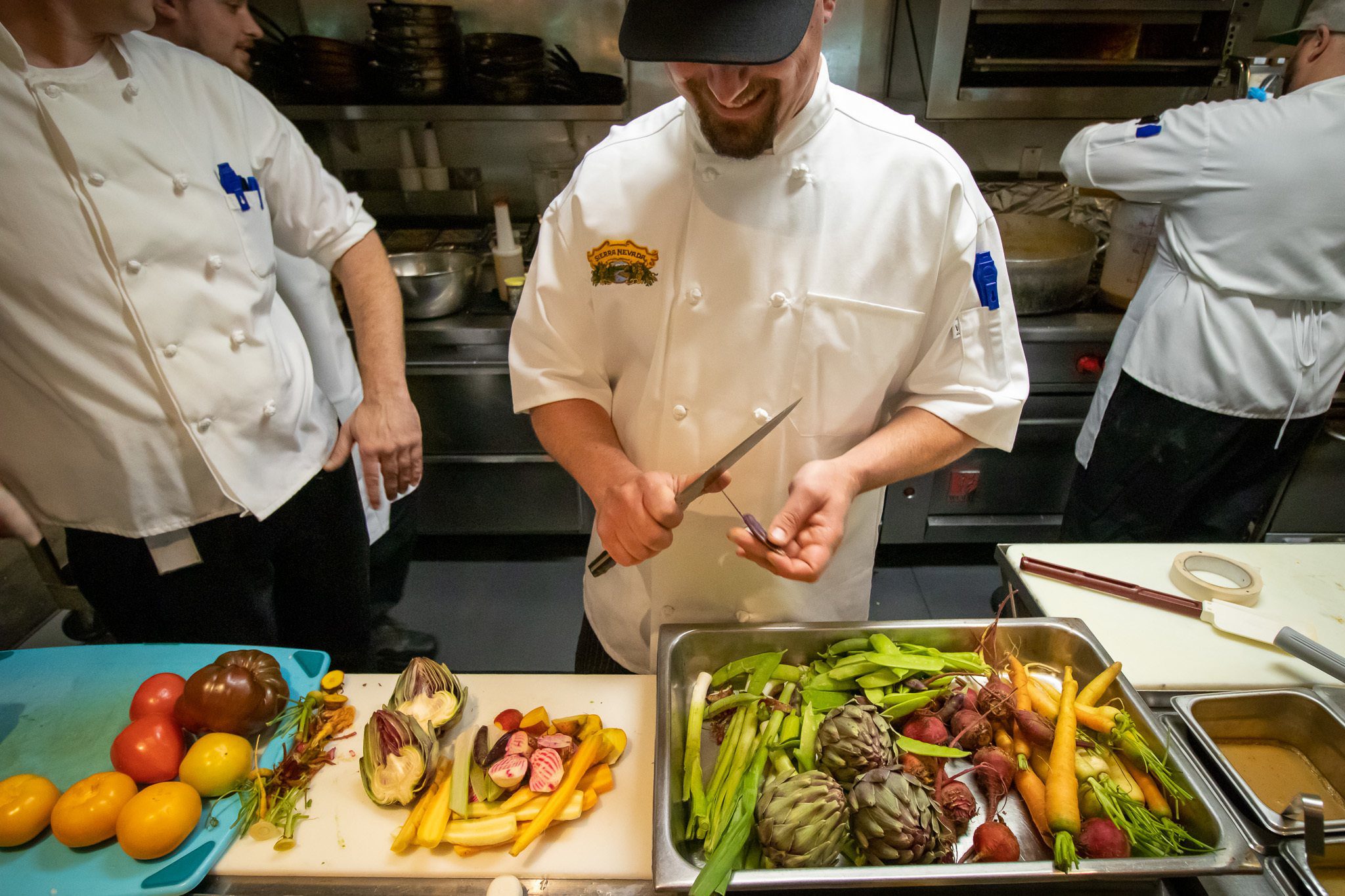
Better flavor was Dan’s goal when he refreshed our Chico Taproom sauerkraut recipe. But this wasn’t a pinch-of-this, dash-of-that kind of update.
“We’ve been playing a lot with food science,” he says.
Dan had an idea: maybe we can ferment the sauerkraut in-house. Moreover, let’s use the lactobacillus that came right from our fruit orchard—one of the fermentation players in our Estate Farmhouse Ale. (Lactobacillus is a food-friendly microorganism in yogurt, table olives, and other items on your grocery list.) But he needed more input and expertise.
Dan found himself around a table with Jim from the garden, our lead microbiologist, two brewers from our barrel-aging program, and our technical training manager.
“Basically, I looked at all of them and was like, ‘Pretend I know nothing about fermentation,’” he says. “We talked about pH, we talked about acidity [and] the components necessary to make lactobacillus thrive. Then I went out and bought a fermenter.”
Dan took his first attempts to our quality laboratory where lead microbiologist Rachel Eidman ran tests on the “kraut juice.” She treated it like sour wort for a beer, making sure the pH and titratable acidity reflected a healthy fermentation.
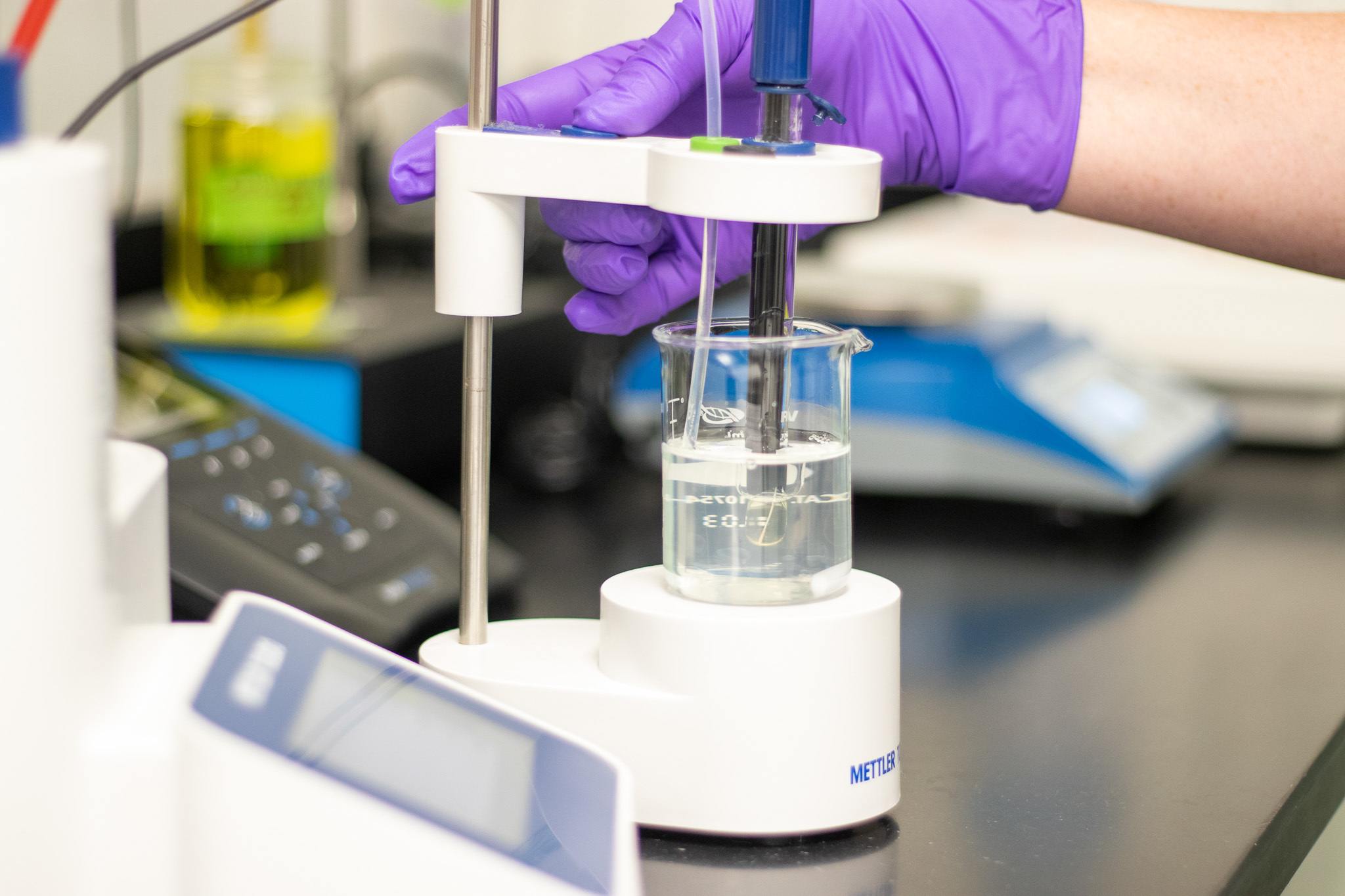
It’s been four months of successful sauerkraut—decidedly tart, floral and bold. (Get your hands on that monster Reuben.) But Dan’s not done.
“We’re making 14-gallon batches,” he says. “Now I’m ready to step it up a notch.”
Dan’s got special kraut in mind for our Oktoberfest parties this fall, and it’ll take the help of our barrel-aging program.
“[We’re] getting to incorporate the knowledge of 39 years of brewing beer into our food,” Dan says. “It’s just phenomenal.”
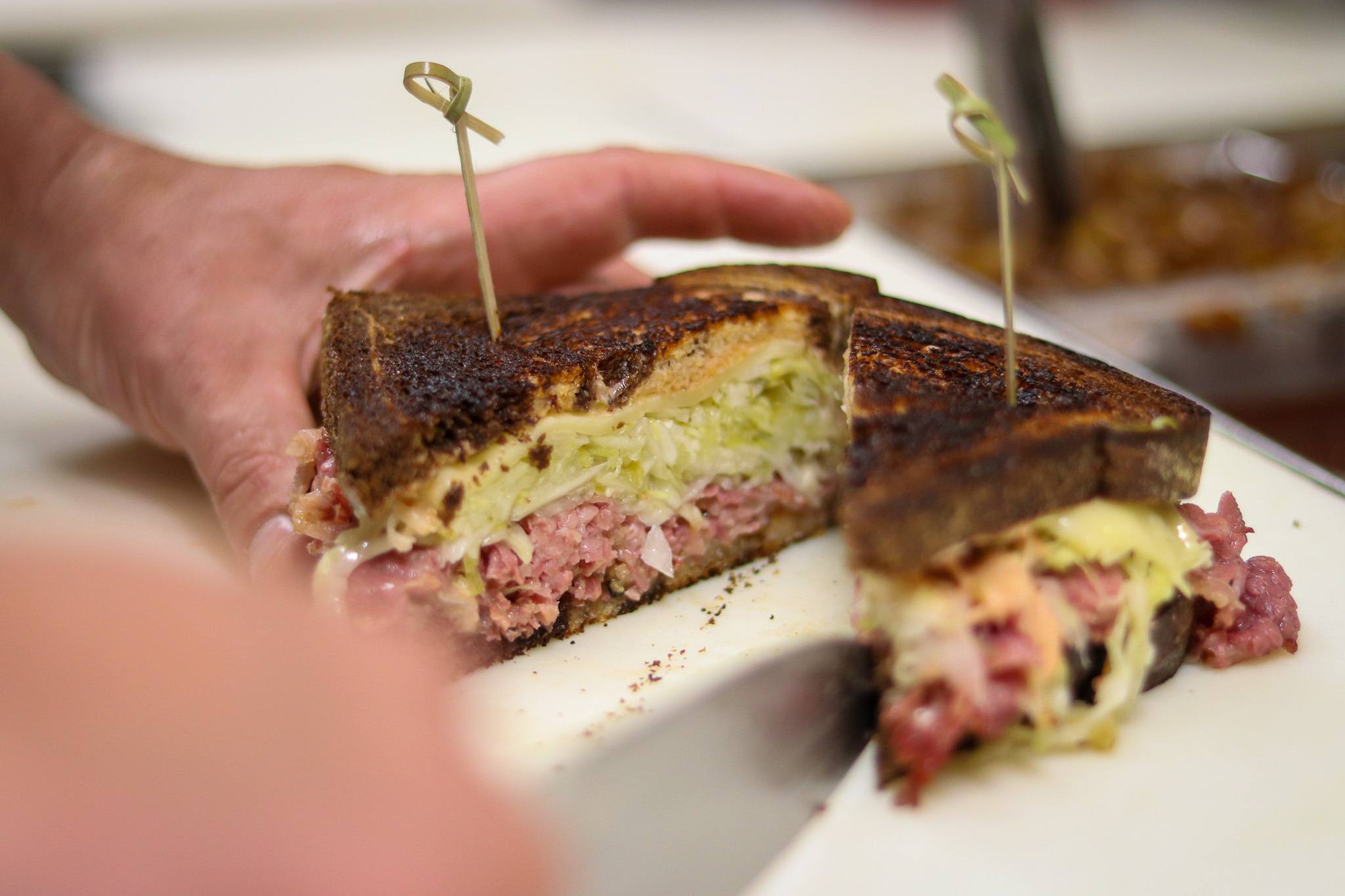
But lederhosen are months away. Right now, Dan’s working with the garden team to prep a summer menu that’s loaded with Estate items.
Dan hears from his veteran Taproom teammates that “it gets out of hand the amount of stuff that can come out of that garden.” So a big part of Taproom-garden collaboration is nailing down harvest timelines as best they can.
“The patty pan squash is going to be ready maybe three weeks before the tomatoes,” Dan explains as an example.
It’s nature at work, and you can’t force its hand.
“There’s imperfection in it,” Dan says, “and I think that’s what makes it awesome.”
As for those tomatoes, Dan’s got plans. He wants to top them with from-scratch barrata, an Italian cheese shaped like a pouch with a prize inside.
“When you cut into it, the outside cheese is warm like freshly stretched mozzarella,” Dan says, “and it oozes out this creamy, cheesy mixture.”
It’s an exciting dish, sure, but our chefs and agriculture teams share a deeper motivation. Making food for people is intimate; it’s a declaration of trust you can’t take for granted. Ingredient choices reflect that, too, and what comes out of the brewery gardens is flat-out unbeatable.
“It’s not [just] about ‘Oh, does it taste good?’” Dan says. “It’s asking do they feel good when they wake up the next morning? Do they know it was a great meal?”
That’s an ambitious entrée: stellar flavor and a good night’s sleep. But isn’t it nice knowing that everyone behind your dinner is aiming that high?
